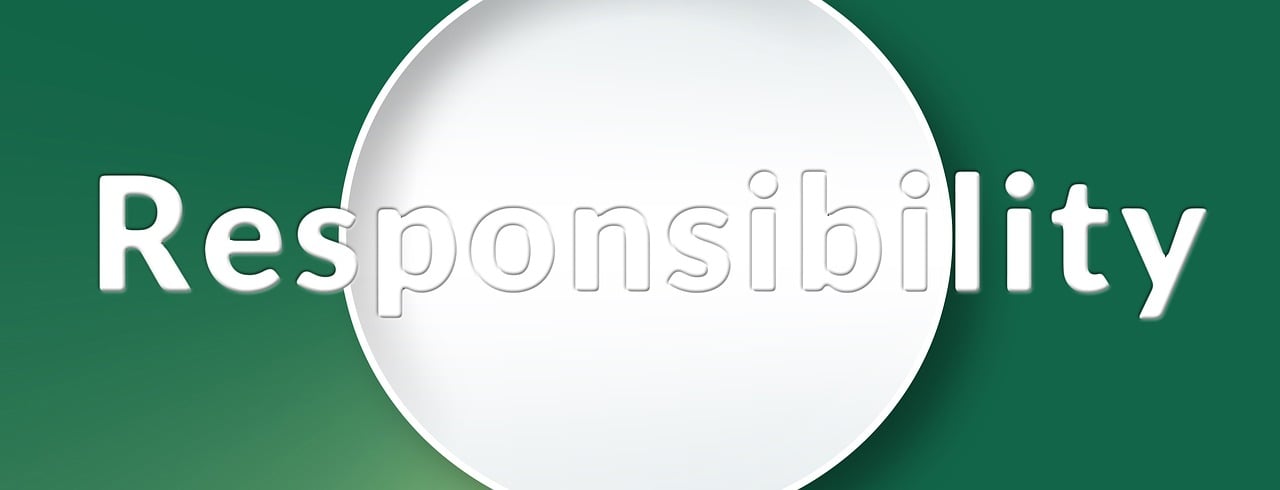In today’s fast-paced economic landscape, managing debt effectively is more crucial than ever for businesses striving to grow sustainably. The aftermath of the pandemic coupled with higher interest rates has posed new challenges for entrepreneurs navigating their financial strategies. Many businesses face mounting pressures as pandemic-era loans come due, and refinancing now commands significantly higher costs, squeezing margins tighter than before. Yet, debt, when managed wisely, remains a powerful tool for expansion, asset acquisition, and operational agility. Recognizing the types of debt, improving cash flow, and leveraging modern financial solutions from providers like American Express, Bank of America, and PayPal can transform perceived liabilities into growth accelerators. This article delves into advanced approaches for debt management, enriched with practical insights, actionable tips, and real-world examples to help business owners confidently tackle their debt while fueling their ambition.
Understanding Different Types of Business Debt and Their Impact on Growth
Grasping the nuances of your business debt portfolio lays the groundwork for effective handling. Not all debt is created equal; distinguishing short-term from long-term obligations, as well as secured versus unsecured loans, enables better strategic planning and risk assessment.
Short-term debt typically includes lines of credit or credit cards provided by institutions such as Capital One or Square. These instruments are essential for smoothing out cash flow or seizing immediate opportunities but often carry higher interest rates. For instance, credit cards may charge APRs ranging from 12% to 29%, making judicious use paramount.
In contrast, long-term loans, often secured with business assets, such as those offered by Bank of America or LendingClub, usually feature lower interest rates and structured repayment schedules stretching beyond a year. These are preferable when financing bigger initiatives like equipment purchases or facility expansions since the costs are spread out and more predictable.
Moreover, loans can be secured—backed by collateral such as property or equipment—or unsecured, relying solely on creditworthiness. Secured debt often allows businesses to access funds at reduced rates due to the lender’s diminished risk.
Understanding the contractual terms is equally vital. Businesses need to catalog their debt with comprehensive details including principal amounts, interest rates, payment deadlines, and penalties for late payment or prepayment. Tools like QuickBooks or Nav can assist companies in maintaining clear records and generating insightful cash flow forecasts.
| Debt Type | Typical Use | Interest Rates (estimated) | Repayment Term | Benefits | Risks |
|---|---|---|---|---|---|
| Short-term Credit (Credit Cards, Overdrafts) | Working capital, short-term expenses | 12% – 29% | Months | Flexible, fast access to funds | High interest, may encourage overspending |
| Long-term Loans (Bank Loans, SBA Loans) | Equipment, expansion projects | 4% – 10% | 1 to 10 years | Lower interest, fixed schedules | Collateral requirements, longer commitments |
| Invoice Financing (Factoring, Fundbox) | Improving cash flow | 5% – 15% based on receivables | Short-term | Speeds up cash, eases liquidity pressure | Fees may accumulate, affects profit margins |
For example, a small business owner using Fundbox for invoice financing can unlock cash tied up in unpaid invoices, providing breathing room without resorting to traditional loans. Meanwhile, leveraging PayPal’s business credit options can streamline access to working capital for online retailers.
Balancing these debt forms with strategic intent — focusing on flexibility, cost, and impact on growth objectives — will empower businesses to leverage borrowing optimally rather than becoming overwhelmed by liabilities.

Crafting a Strategic Debt Repayment Plan to Safeguard Your Business’s Future
Once a business comprehends its debt profile, the next step is crafting a structured repayment plan that aligns with growth ambitions and cash flow realities. A clear plan not only prevents default risk but also improves creditworthiness, facilitating access to future funding from reputable institutions like American Express or Nav.
Prioritizing debt repayments is key. Paying off high-interest debt first, such as credit card balances with Capital One or revolving credit from Square, reduces the overall interest burden. This approach frees up capital for reinvestment in the business.
Allocating a fixed portion of revenue monthly towards debt ensures consistent progress without jeopardizing operational liquidity. Businesses can use financial platforms like QuickBooks to project repayment scenarios and cash flow to identify comfortable monthly commitments.
In times of difficulty, negotiating terms with lenders may be necessary. Many banks, including Bank of America, are open to extending repayment periods or offering temporary interest rate reductions, especially for clients demonstrating good-faith efforts to repay.
Adopting a tiered approach to repayments can offer clarity:
- Tier 1: Minimum payments on all debts to maintain account standing
- Tier 2: Extra payments towards highest interest rate debts
- Tier 3: Emergency cash reserves for unexpected expenses
For illustration, consider a company with $150,000 in debt spread across three loans. By paying minimums on the lowest-interest loan while aggressively targeting a higher-interest unsecured loan, they reduce costs and shorten the repayment timeline. Regular reviews allow recalibration, taking advantage of opportunities like debt refinancing or increased revenues.
| Debt | Principal | Interest Rate | Minimum Monthly Payment | Recommended Extra Payment | Total Monthly Commitment |
|---|---|---|---|---|---|
| Unsecured Loan (Capital One) | $50,000 | 18% | $1,200 | $800 | $2,000 |
| Equipment Loan (Bank of America) | $70,000 | 6% | $1,100 | $0 | $1,100 |
| Credit Card (American Express) | $30,000 | 22% | $900 | $300 | $1,200 |
This methodical approach not only slashes interest expenses but fosters financial discipline crucial for long-term growth.
Enhancing Cash Flow and Revenue Streams to Strengthen Debt Handling
Robust cash flow is the lifeblood of debt management. Without steady liquidity, a business risks missed payments and damaged credit, which can constrain future financing options. Therefore, proactive cash flow optimization is a priority.
Implementing stringent invoicing and collection policies helps maintain a healthy cash inflow. Solutions from Square or QuickBooks enable automated invoicing and reminders, reducing delays and improving collection efficiency.
On the expense side, continuous reviews can identify wasted resources or redundant spending. For example:
- Negotiating better terms with suppliers
- Switching to more cost-effective service providers
- Limiting discretionary spending during tight financial periods
Maintaining cash reserves is equally essential. Financial advisors often recommend a minimum buffer covering three to six months’ operating expenses, which prevents reliance on short-term borrowing during downturns or unexpected costs.
Expanding revenue streams diversifies risk and boosts debt service capacity. New markets, product lines, or digital transformation initiatives can substantially increase sales without proportionally increasing costs.
Consider a mid-sized retail business incorporating PayPal payment options alongside traditional channels. The ease and security attract more customers, expanding the revenue base and enabling quicker debt repayments.
Businesses that leverage data analytics tools like Nav can pinpoint profitable customer segments, sales trends, and areas for upselling, sharpening marketing and sales efforts.
| Cash Flow Improvement Tactic | Expected Outcome | Tools/Platforms |
|---|---|---|
| Automated invoice reminders | Faster payments | Square, QuickBooks |
| Supplier contract renegotiation | Lower cost of goods/services | Direct negotiation, industry benchmarking |
| Introducing new sales channels | Increased revenue streams | PayPal, own e-commerce platform |

How Refinancing and Debt Consolidation Can Unlock Financial Flexibility
One of the smarter moves in debt management involves refinancing or consolidating existing debt. These strategies can simplify financial obligations while reducing costs.
Refinancing entails replacing high-interest loans with new funding at lower rates. For example, many companies initially borrowed at historically low pandemic rates near 1%. Today, refinancing to Bank of America or LendingClub options at current competitive rates can still represent significant savings if approached strategically.
Debt consolidation merges multiple debts into one loan with a unified payment schedule, easing administrative burdens and improving payment consistency.
In the current environment, the rising base rates set by central banks make refinancing challenging; however, targeted applications backed by strong credit data from agencies like Experian or Nav improve negotiation power.
Moreover, government initiatives aimed at assisting businesses to restructure pandemic-related debts provide beneficial pathways. Navigating these opportunities may require professional financial consulting but can dramatically enhance debt sustainability.
For instance, a business with several small loans through Capital One credit products and PayPal working capital might consolidate to a single term loan from Bank of America, achieving lower monthly payments and simplifying cash management.
| Strategy | Benefits | Potential Challenges | Recommended Providers |
|---|---|---|---|
| Refinancing High-Interest Debt | Lower interest rates, reduced monthly outflows | Qualification criteria, fees | Bank of America, LendingClub |
| Debt Consolidation | Simplified repayments, improved planning | Possible longer repayment term | American Express, QuickBooks financing |
| Government Debt Restructuring Programs | Subsidized rates, moratoriums | Application complexity | Local economic development agencies |
The Value of Professional Advice in Navigating Business Debt Successfully
Debt management is rarely a one-size-fits-all process. Professional guidance from financial advisors, accountants, and legal experts can be instrumental in crafting a strategic debt approach tailored to the unique context of each business.
Engaging financial advisors who understand credit analysis and cash flow modeling can help entrepreneurs spot refinancing windows, optimize repayment schedules, and forecast growth scenarios. Firms specializing in small business finance may have partnerships with funding sources like Fundbox or LendingClub, providing clients with competitive loan options.
Accountants assist not only with budgeting but also tax planning to optimize deductions related to debt interest, improving net profitability.
When businesses face distress or potential insolvency, legal counsel specializing in business bankruptcy and debt negotiation safeguards owners from costly missteps and opens avenues for restructuring negotiations.
Platforms like Nav and Experian provide real-time credit monitoring and financial health reports, empowering businesses to make informed choices and present themselves effectively to lenders.
Ultimately, employing professional expertise transforms debt from a potential threat into a managed asset supporting sustainable growth and resilience.
| Professional Resource | Role | Benefits | How to Access |
|---|---|---|---|
| Financial Advisor | Debt strategy & cash flow forecasting | Identifies refinancing & repayment opportunities | Consulting firms, platforms like Nav |
| Accountant | Budgeting, tax planning | Optimizes tax benefits & manages finances | Certified public accountants, QuickBooks professionals |
| Legal Advisor | Debt restructuring & bankruptcy advice | Protects business during financial distress | Business law firms, specialized consultants |
Frequently Asked Questions about Smart Debt Management for Growing Businesses
- Q: What’s the difference between secured and unsecured business debt?
A: Secured debt is backed by collateral, such as property or equipment, which reduces lender risk and typically results in lower interest rates. Unsecured debt relies solely on the borrower’s creditworthiness and usually comes with higher rates due to higher risk. - Q: How can I improve my business’s cash flow to manage debt better?
A: Enhancing cash flow involves automating invoicing and collections through platforms like Square, negotiating with suppliers for better terms, and controlling unnecessary expenses. Maintaining cash reserves also buffers against unexpected costs. - Q: When should I consider refinancing or consolidating my business debt?
A: Refinancing or consolidation is advisable when current debts have high-interest rates or when simplifying multiple payments to improve budgeting and cash flow. Lower interest loans or favorable government programs can provide cost savings. - Q: Are there specific financial service providers recommended for small business debt management?
A: Yes, companies like American Express, Bank of America, Capital One, PayPal, Square, QuickBooks, Fundbox, LendingClub, Experian, and Nav offer tailored solutions ranging from credit cards to financing and credit monitoring tools that cater to small business needs. - Q: Can debt ever be a positive asset for a business?
A: Absolutely. When used strategically, debt can finance growth initiatives, enable quicker scaling, and improve cash flow flexibility. Responsible debt management ensures borrowing translates into increased business value rather than financial strain.

